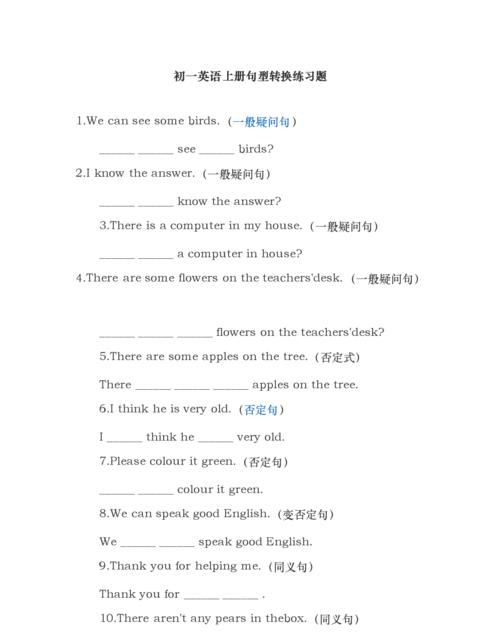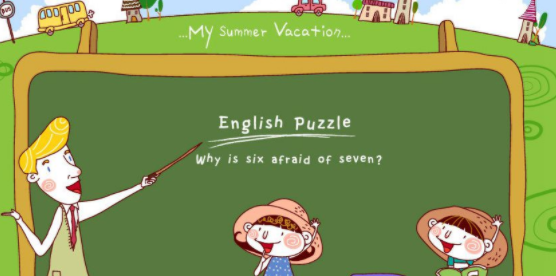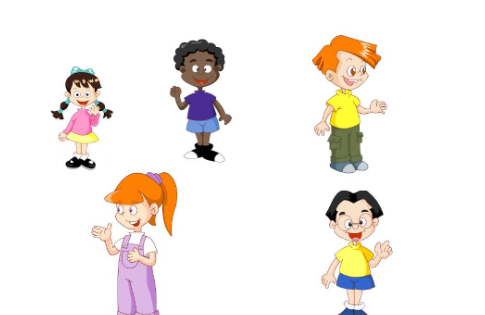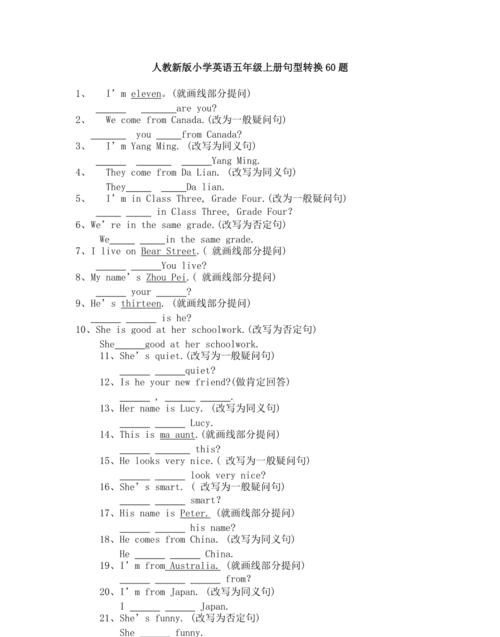本文目录
初中的英语句式,句型有哪些
1、陈述句改为否定句 如:she has a new bike.(改为否定句)→ she __ __ a new bike.
2、同义句转换 如:They are English.→They are __ __ .
3、一般陈述句改为特殊疑问句,即对划线部分提问:my sister is _eleven_.→__ __ is your sister?
4、陈述句改为一般疑问句,如:Tom has big eyes.→__ Tom __ big eyes?
5、一般句改为反意疑问句,如:She often has lunch at school.→She often has lunch at school,doesn't she?
6、一般句改为被动句 如:I have finished my work..→My work has been finished by me.
7.把两个句子合成一个句子,如:She is a worker.She is a doctor.→She is a worker and doctor.

六上英语句型转换带答案
英语句型转换常规基本句式的转换方法、技巧点拨“句型转换”有两种形式:
一是按要求转换句型(如:要求将陈述句转换为否定句或一般疑问句;改为祈使句或感叹句;对划线部分提问等);
二是“同义句转换”。本题型在中考中重要是测试我们运用英语“句型”的能力。“四位一体”的“句型转换”专项训练,就是为了发展我们这方面的能力。第一类题型的转换,重点是基本句型的运用,一般都有规律可循。

辅音
(注:多数辅音的读音与拼音差别不大,可以通过拼音来进行谐音;还有一部分辅音没有对应的拼音字体,这里我们主要是针对/θ ð ʃ ʒ/这四个辅音)其中,/θ/和/ð/这两个音标,它们并没有相近似的拼音来对应,主要是靠嘴形来记忆。
/θ/――上下牙齿咬着舌头尖,发“斯"的音;/ð/――舌头顶上牙堂发拼音z一声;/ʃ/――师;/ʒ/――牙齿闭合,舌头虚碰牙齿发拼音r一声。
小学英语句型转换方法归纳及例句翻译
小学英语句型转换方法归纳如下:
1、肯定句改否定句的方法 :
1.在be动词后加not
如:is not, are not,am not
2.在can,should, will等后加not

如:cannot, should not,will not;
3.上述都没有的,在动词前加助动词否定形式don't/doesn't/didn't
4、 some 改成any
如:I am a girl. → I am not a girl.
You are a student. →You are not a student.
→You aren’t a student.
This is Tom’s bag, → This is not Tom’s bag.→ This isn’t Tom’s bag.
2、肯定句改一般疑问句的方法
1.把be动词放在句首,剩下的照抄
(some 改成any,I改成you,my改成your)句点改成问号。
2.把can,shall, will等放到句首,剩下的照抄
(some 改成any,I改成you,my改成your)句点改成问号。
3.上述都没有的,在句首请助动词Do/Does/Did帮忙,剩下的照抄,(some 改成any,I改成you,my改成your,)句点改成问号
注意:句首的第一个字母要大写,句尾标点应为“?”
如:I am in Class 6. →Are you in Class 6?

You are from America.
→Are you from America?
It is an orange. →Is it an orange?
语句顺序为:
Yes + 主语 + am /is/ are/was/were.|can.|do/does/did|;
No + 主语+ am not/ isn’t/ aren’t 如:
—Are you an English teacher?
→Yes, I am. /No, I am not.
—Is that a bird?
→Yes, it is./ No, it isn’t.
英语句型转换题及答案
句型转换题是中考常见题型,它主要用来考查大家对句子结构的构成、变化的掌握及在行文中的运用等,类型繁多. 在句型转换中一定要注意时态,记清单词的搭配.现以近两年中考题为例,分类介绍如下: [第一类] 改成否定句 英语中有关否定的结构各不相同,除动词部分构成的否定外,还有名词、代词的否定、部分否定、否定转移、以及一些表示否定意义的短语或句型等. 一、含有连系动词、情态动词等助动词的句子改为否定句时,在连系动词、情态动词等的后面加not就行了.如:(划线部分为正确答案,下同.) 1. He was late for school yesterday. (2005黑龙江省泰州市) He wasn’t late for school yesterday. 2. The students of No.2 Middle School have gone for a piic already. (2004新疆) The students of No.2 Middle School haven’t gone for a piic yet. 二、祈使句变否定句一般在其前加don’t.如: 3. Open the window. (2005江苏省) Don’t open the window. 三、实义动词的否定式是在实义动词前加don’t, doesn’t, didn’t等.如: 4. She does the housework every day. (2005黑龙江省哈尔滨市) She doesn’t do the housework every day. 5. He returned the book to the library this morning. (2004重庆市) He didn’t return the book to the library this morning. 注意:变否定句时须注意某些词语的变化,如some改为any, something改为anything, already改为yet, both改为neither, all改为none等.又如: 6. Both of them are my best friends. (2004甘肃省兰州市) Neither of them is my best friend. [第二类] 改为疑问句 可分为一般疑问句、选择疑问句和反意疑问句. 一、变一般疑问句时,含有连系动词、情态动词的句子,只需将它们移至句首,第一个字母变为大写,句尾改为问号即可.含有实义动词的句子,在实义动词前加do, does, did等.变化过程中也要注意某些词语和人称的变化.如: 7. There’s something to eat in the cupboard.(2005贵州省贵阳市) Is there anything to eat in the cupboard? 8. Kate does morning exercises every day. (2004山东省济南市) Does Kate do morning exercises every day? 9. Ann returned the book to the library yesterday. (2005四川省成都市) Did Ann return the book to the library yesterday? 二、变选择疑问句时,如果该句是一般疑问句,则在后面直接加“or+另一选择部分”就行了;若是陈述句,则要先变成一般疑问句.如: 10. John is an American. (用a Canadian改为选择疑问句)(2004新疆) Is John an American or a Canadian? 三、变反意疑问句时,要注意“前肯后否”和“前否后肯”,还要注意一些特殊形式的反意疑问句.如: 11. She has hardly had anything this morning, has she?(2005山东省泰安市) 12. You will meet your friends at the railway station, won’t you?(2004重庆) 13. She had nothing for breakfast, did she?(2005青海) 14. There was no time for the twins to go shopping, was there?(2004黑龙江省哈尔滨市) [第三类] 单数句与复数句之间的互变 转化时,名词和动词的人称和数,人称代词、物主代词、指示代词的人称和数都要作相应的变化.如: 15. That is my book. (2004浙江省宁波市) Those are our books. 16. She is his student. (2005江苏) They are their students. [第四类] 变感叹句 将陈述句变成感叹句,要分以下几步: 第一步:在陈述句的谓语动词后将句子划断.如:The boxes are/very heavy. 第二步:斜线后的形容词、副词的修饰语要去掉,如上句去掉very. 第三步:若斜线后部分的中心词是形容词、副词,则在斜线后部分的前面加how.如果中心词是名词,就加what. 第四步:将陈述句句首的大写改为小写,将感叹句句首改为大写. 第五步:将陈述句句末的句号改为感叹号.于是上句应改为:How heavy the boxes are!又如: 17. They are happy to see each other.(2005甘肃省兰州市) How happy they are to see each other! [第五类] 同义转换 指用不同的词汇、短语、句型表示相同或相近的意思.它主要有以下几种变化: 一、用同义词(词组)、近义词(词组)替换句中的某一部分.如: 18. Lin Tao is good at physics. (2005江苏省盐城市) Lin Tao does well in physics. 19. It took him two hours to play with puters last night. (2004甘肃省兰州市) He spent two hours playing with puters last night. 二、用反义词 (词组) 或句型改写.如: 20. I think art is less important than maths. (2004浙江省杭州市) I don’t think art is more important than maths. 21. The runner fell behind the others though he did what he could.(2004徐州市) The runner failed to keep up with the others though he tried his best. 三、简单句和并列句与复合句等句式间的转换.如: 22. My father isn’t a history teacher. My mother isn’t a history teacher, either. (2004江苏省徐州市) Neither my father nor my mother is a history teacher. 23. Jim can’t decide what he should do next. (2004甘肃省兰州市) Jim can’t decide what to do next. 24. David was so careless that he didn’t find the mistakes in his test paper. (2004福建省福州市) David was too careless to find the mistakes in his text paper. [第六类] 对划线部分提问 实际上就是把陈述句变为特殊疑问句.对不同的部分提问要用不同的疑问词. 一、对主语提问:只需选择一个恰当的疑问词代替划线部分,句子的语序不变,指人用who, 指物用what或which.如: 25. Mr. Green teaches them English.(2005新疆) Who teaches them English? 二、对谓语提问:不管后面接宾语与否,疑问词都用what, 并用do的适当形式代替谓语部分.如: 26. He was playing basketball at four yesterday afternoon. (2005青海) What was he doing at four yesterday afternoon? 三、对宾语提问:指人的用who (whom), 指物的用what或which.如: 27. He lives with his grandmother.(2005江苏) Whom does he live with? 28. I have two books in my bag. (2004山东省泰安市) What do you have in your bag? 四、对表语提问:要根据表语所表示的不同意思,选择不同的疑问代词.指人时一般用who;指时间时用when或what time;指职业时,用what;指颜色时用what colour; 指距离时用how far等.如: 29. Those flowers are red. (2004重庆) What colour are those flowers? 30. Urumchi is 3790 kilometres away from Wuhan. (2005新疆) How far is Urumchi away from Wuhan? 五、对定语提问:问谁的用whose, 问哪个用which或what, 问数量用how many (much).如: 31. The car near the river is mine. (2005山东省泰安市) Which car is yours? 32. I borrowed nine books from the library. (2005新疆) How many books did you borrow from the library? 六、对状语(从句)提问:指时间的疑问词用when (what time), 指地点用where, 表示原因用why, 表示程度、方式用how, 表示频度用how often,表示时间段用how long等.如: 33. Allan will go back to England by plane next month. (2004福建省福州市) How will Allan go back to England next month? 34. John went to see his grandmother once a week. (2004广东省广州市) How often did John go to see his grandmother? 35. He has worked in this school for five years. (2004四川省成都市) How long has he worked in this school? 36. Mrs Read didn’t sleep well last night because the wind made too much noise. (2005山东省济南市) Why didn’t Mrs Read sleep well last night? 37. Jim will return in two weeks. (2005黑龙江省哈尔滨市) How soon will Jim return? 七、对混合成分提问:同时对两个或两个以上的提问时,可以用and把几个疑问词连起来放在句首.如: 38. I met Jim in the park the day before yesterday. (2004吉林) When and where did you meet Jim?

以上就是关于英语句型转换都有哪几种,初中的英语句式,句型有哪些的全部内容,以及英语句型转换都有哪几种 的相关内容,希望能够帮到您。

